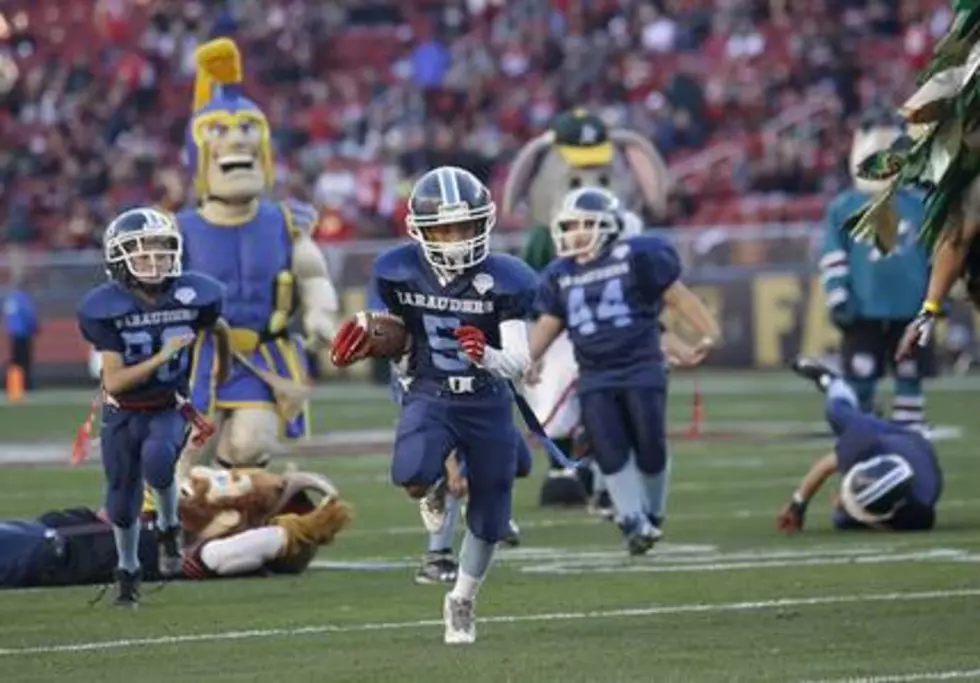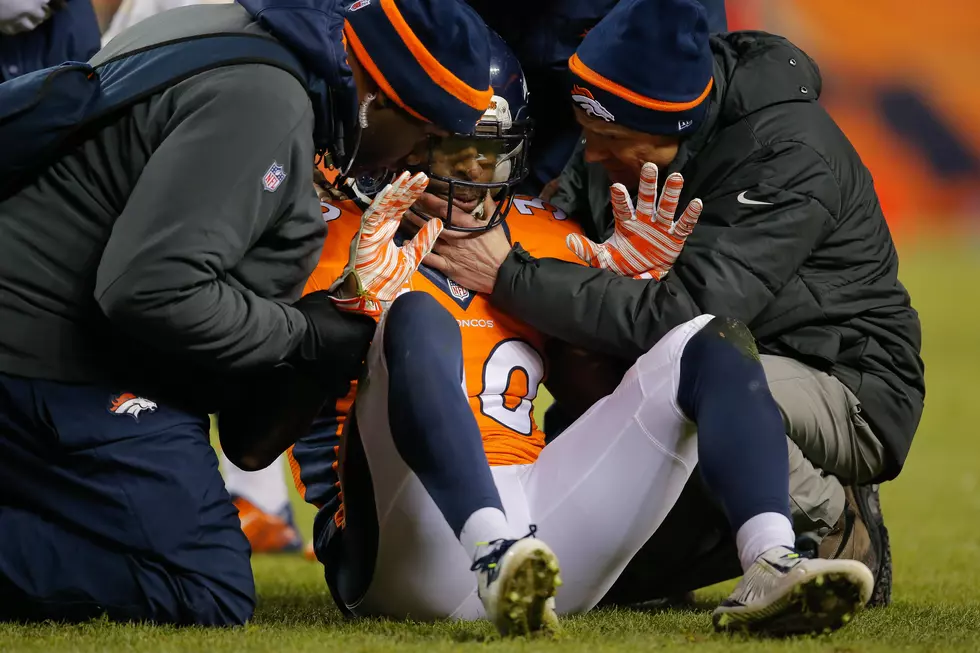![Concussions A Danger In Youth Sports [AUDIO]](http://townsquare.media/site/385/files/2012/10/Football.jpg?w=980&q=75)
Concussions A Danger In Youth Sports [AUDIO]
Concussions and player safety is the hot topic of discussion in professional sports, but what do parent's need to know when sending their kids onto the ball field?
On Sunday, a 12-year old girl playing Pop Warner football in Manchester, Alexis Defilippo, had to be airlifted off the field after reportedly suffering neck injuries and a concussion. Dr. Devashish Anjaria, a trauma surgeon at UMNDJ, notes while sprained ankles and jammed fingers are a common sight in the emergency rooms, it's concussions that should be a major concern for physicians and parents.
The young girl is in good condition, suffering whiplash and a slight concussion when colliding with a team mate on a play on the Pee Wee football team. The pre-teen's mother, Renee Hourigan, is also the President of the Manchester Hawks American Youth Football League and says doctors told her that her doctor wasn't even hit hard. Rather it was the way she fell that caused the problems.
The state recently passed legislation requiring to teach all teachers and coaches about concussions and how to spot the warning signs and how to deal with them. However many parent's still don't have a full grasp on what a concussion really is.
A concussion is in essence a brain injury, and Anjaria says they can occur when children are involved in a big hit or collision. Sometime resulting in the child passing out, but not always.
"To use the later, your bell has been rung. They're dazed they're confused they may be a little dizzy."
Concussions are especially dangerous in children since their brains are still developing says Anjaria, noting even one injury can be significant, however in contact sports like soccer, lacrosse, and football children are often not limited to just one injury.
"They're at risk of having repetitive concussions where unfortunately it's not one and one might not add up to two, but one and one might add up to something more than that."
He says many of the effects from concussions can be lasting, and children who suffer to many big hits in a young age can find themselves struggling in High School and young adulthood.
"The ramifications are that someone has problems with problem solving, concentrating, memory that unfortunately is going to follow them for the rest of their life." He adds repeated limb and bone injuries to developing bodies can have lifelong effects as well, resulting in joint and bone development.
The twelve year old girl's injury strikes many as odd because boys there are more boys playing high impact sports and resulting in these injuries. However Anjaria notes both genders are equally at risk, and as female sports leagues become more popular for sports like lacrosse, field hockey, and competition cheerleading, it is not uncommon to see more girls suffering concussions as well.
For parents that want to prevent these concussions and damaging injuries, Anjaria says to focus on proper warm ups, exercise, and training.
"The more strength someone has, the more practice they have, the more limber they are. The less chance they have of getting sprains, strains, and those kind of injuries."
Additionally it's important to make sure all of a child's protective gear is worn, including helmet, padding, etc. He says that's especially important for skateboarders and bmx riders.
"People wouldn't think about getting onto a football field without their helmet and padding but the skateboarder and bicyclist on the street in the neighborhood are doing in it. It's still a sport, even though it's not an organized one."
Parent's and coaches need to know warning signs of serious injuries and concussions.
"Pain is not normal, if something hurts taking them off and having them examined is an important part of this. In terms of concussions just having the wind knocked out of you is fine, but if they're confused, if they're complaining of headache, blurry vision, any of those things then taking them off the field is by far the most important thing."
He notes the old adage of having a hurt player sit out, isn't enough.
"Now the treatment of concussion has come to what's known as cognitive rest, really letting the whole brain rest. That means if you've had a concussion or still having headaches and blurry vision, or any of the other symptoms we look out for like change in appetite, difficulty sleeping, don't like bright lights, any of those things need the child to be taken out of school and allowed to rest."
Anjaria adds that means getting "real" rest.
"The one thing is in the modern world kids don't sit at home resting either. That means no video games, no YouTube, no texting. Really resting the brain so that it can recover from these concussions."
He says in addition to being able to better recognize things like concussions and other injuries, Anjaria says kids are performing at a higher physical level at a younger age.
"When I was growing up it was you played for fun and it was the rare person who was actually ever thinking about using it to pay for college or even go further. Clearly it's on more people's minds."
Ultimately Anjaria suggests parents and coaches remember that prevention is better than treating afterwards.
"It's important to not underplay things, saying 'oh that's just a headache' and 'Keep going', and recognize that children really are still developing and are at greater risk for having long term problems from what is a relatively minor injuries. "
Rosetta Key contributed to this story
More From New Jersey 101.5 FM









